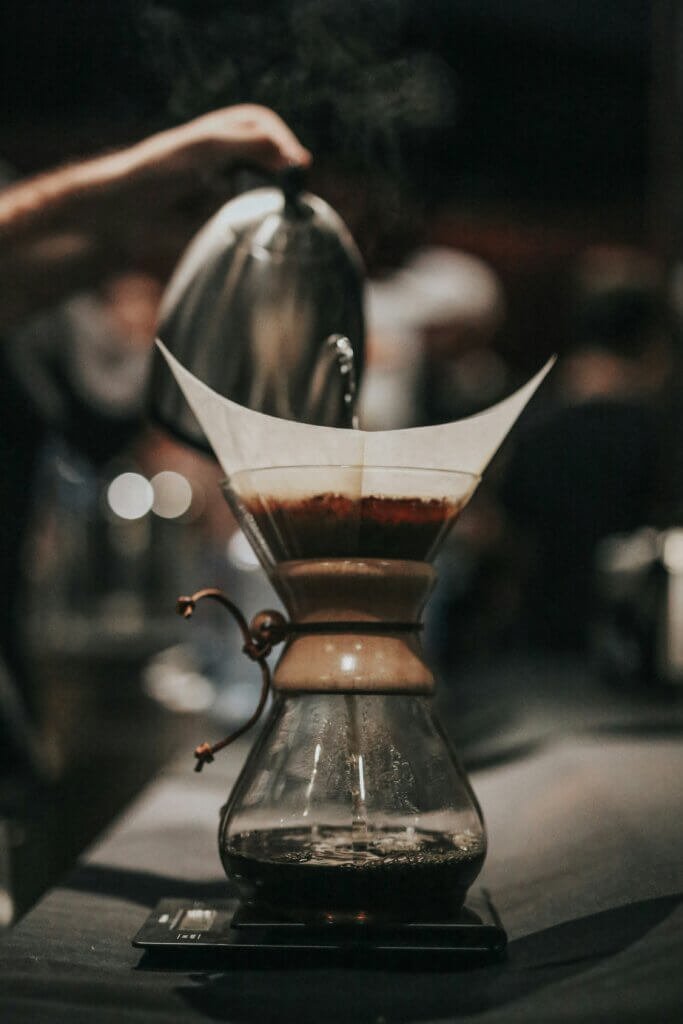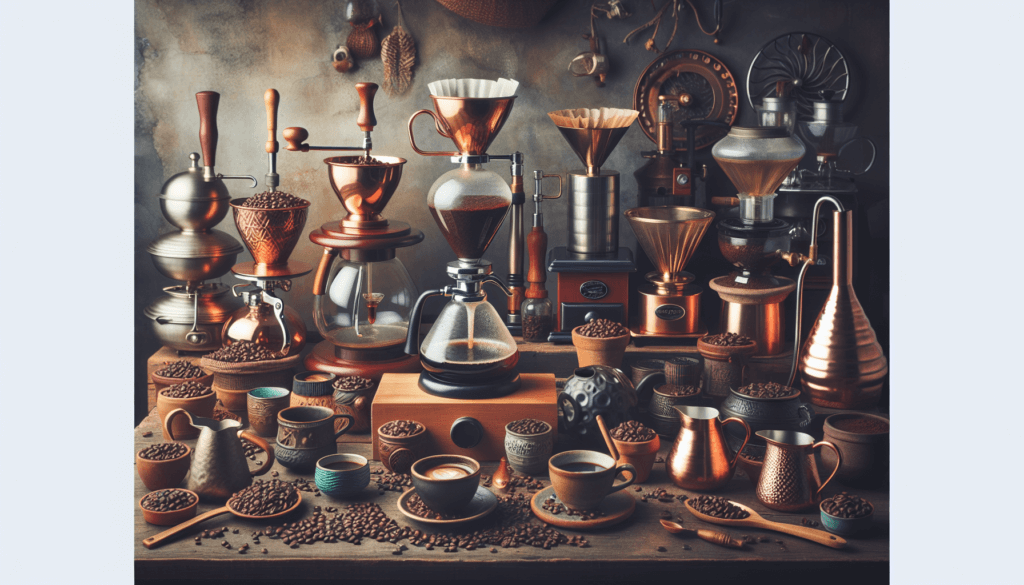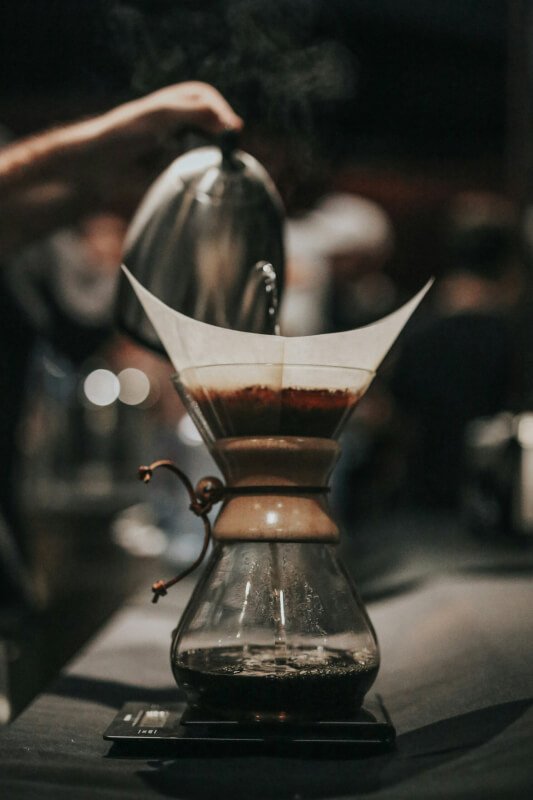Are you in search of some expert advice on how to craft and experiment with delectable coffee concoctions? Look no further! This article provides valuable tips for developing and testing new coffee recipes. Whether you’re a budding barista or a coffee enthusiast wanting to explore the world of coffee innovation, these tips will help you create flavorsome drinks that are sure to impress. From understanding different brewing techniques to experimenting with various flavor combinations, get ready to take your coffee game to the next level. So grab your mug, fill it with curiosity, and embark on a delicious journey of coffee experimentation!

Choosing the Coffee Beans
When it comes to developing and testing new coffee recipes, the first step is to choose the right coffee beans. This is crucial as the type of beans you use will greatly impact the flavor and profile of your coffee. There are a few key factors to consider when selecting your beans.
Consider the Roast Level
The roast level of your coffee beans plays a vital role in determining the taste and aroma of your brew. Depending on your personal preference, you can choose from light, medium, or dark roasted beans. Lighter roasts tend to have a more delicate and nuanced flavor, while darker roasts are bolder and richer. Experiment with different roast levels to find the perfect balance of flavors for your recipes.
Experiment with Different Origins
Another aspect to consider is the origin of the coffee beans. Different regions around the world produce beans with distinct flavor profiles. For example, beans from Ethiopia are known for their fruity and floral notes, while beans from Colombia are often described as having a nutty and chocolatey taste. By using beans from different origins, you can add variety and complexity to your coffee recipes.
Select Specialty Coffee Beans
To truly elevate your coffee recipes, it’s worth investing in specialty coffee beans. These beans are carefully selected and expertly roasted to bring out the best flavors. They often come from single-origin farms or small cooperatives, ensuring that each batch is of the highest quality. Specialty coffee beans offer a more refined and exceptional taste experience, making them perfect for creating unique and delicious coffee recipes.
Grinding the Coffee
Once you have chosen your coffee beans, the next step is to grind them. Grinding your coffee just before brewing is essential for achieving the best flavor and aroma. Here are some tips to help you grind your coffee to perfection.
Invest in a Burr Grinder
Investing in a burr grinder is worth every penny. Unlike blade grinders, burr grinders provide a consistent grind size, which is crucial for brewing a delicious cup of coffee. They crush the beans between two abrasive surfaces, resulting in a uniform grind. This consistency allows for better extraction and ensures that the flavors are evenly distributed throughout the brewing process.
Adjust the Grind Size for Each Recipe
Different brewing methods require different grind sizes. For example, a coarse grind is suitable for a French press, while a finer grind is needed for espresso. Experiment with different grind sizes to find the optimal one for each of your coffee recipes. This will help you achieve the desired flavor profile and avoid any over or under extraction.
Grind Freshly Before Brewing
To preserve the flavors of the coffee, it’s best to grind your beans just before brewing. This ensures that the essential oils and aroma are retained, resulting in a fresher and more flavorful cup of coffee. Grinding ahead of time can cause the coffee to lose its potency, leading to a subpar taste. So, make it a habit to grind your beans right before you start brewing for the best possible outcome.
Brewing Methods
With your freshly ground coffee ready, it’s time to move on to the brewing methods. There are numerous techniques to explore, each offering a unique taste and brewing experience. Here are a few methods to get you started.
Explore Different Brewing Techniques
One of the exciting aspects of developing new coffee recipes is the opportunity to explore different brewing techniques. From a classic drip brew to a trendy cold brew, each method has its own merits and flavors. Trying out various brewing techniques allows you to discover new flavors and experiment with different brewing parameters.
Master the Pour Over Method
The pour-over method is a favorite among coffee enthusiasts due to its ability to produce a clean and well-balanced cup of coffee. To master this technique, you’ll need a pour-over cone, paper filter, and a steady hand. The process involves pouring hot water over the coffee in a controlled and circular motion, which extracts the flavors slowly and evenly. With practice, you’ll be able to fine-tune the variables such as the water flow rate and brew time to achieve your desired taste.
Experiment with French Press
Another popular brewing method to experiment with is the French press. This method involves steeping coarsely ground coffee in hot water and then separating the brewed coffee from the grounds by using a plunger. The French press offers a robust and full-bodied cup of coffee, with oils and flavors that might not be as pronounced through other brewing methods. By adjusting the steeping time and coffee-to-water ratio, you can control the strength and intensity of the final brew.
Water Temperature and Ratio
The quality of your water and its temperature are crucial factors that can affect the taste of your coffee. Paying attention to these details will help you achieve the best possible brewing results.
Control the Water Temperature
The ideal water temperature for brewing coffee is between 195°F and 205°F (90°C to 96°C). Water that is too hot can over-extract the flavors, resulting in a bitter brew, while water that is too cold can result in under-extraction and a weak cup of coffee. Invest in a thermometer or an electric kettle with temperature control to ensure that the water you use is at the optimal temperature for brewing.
Find the Right Coffee-to-Water Ratio
The coffee-to-water ratio is another essential element in brewing a great cup of coffee. The ideal ratio is typically around 1:16, which means one part coffee to sixteen parts water. However, this ratio can be adjusted based on personal preference and the flavors you want to bring out in your coffee. It’s important to experiment and find the coffee-to-water ratio that suits your taste best.
Preheat Equipment and Filter
To maintain consistent brewing temperatures, it’s essential to preheat your equipment and the coffee filter. Preheating helps to minimize heat loss during the brewing process and ensures a more even extraction. Simply rinse the cone, filter, and any other brewing equipment with hot water before adding the coffee and water. This simple step can make a significant difference in the overall taste and quality of your brew.

Flavor Enhancements
If you’re looking to take your coffee recipes to the next level, consider adding flavor enhancements. From spices and herbs to flavored syrups and fruits, there are many ways to infuse additional flavors into your coffee creations.
Add Spices and Herbs
Spices and herbs can add complexity and depth to your coffee recipes. Experiment with adding a touch of cinnamon, nutmeg, or cardamom to your coffee grounds before brewing. These aromatic spices can complement and enhance the flavors of your coffee, creating a delightful and unique taste experience. Similarly, adding mint leaves or lavender can provide a refreshing twist to your brew.
Experiment with Flavored Syrups
Flavored syrups are a popular choice for adding sweetness and a burst of flavor to your coffee. Whether it’s caramel, vanilla, or hazelnut, these syrups allow you to customize your recipes according to your preferences. Start with a small amount and gradually adjust the quantity to find the perfect balance between sweetness and the natural flavors of the coffee.
Infuse with Fruits or Citrus Zest
Fruits and citrus zest can provide a bright and refreshing addition to your coffee recipes. Try infusing your coffee with a slice of orange or a few wedges of lemon to bring out the natural acidity and add a citrusy twist. Alternatively, you can experiment with other fruits like berries or even tropical fruits for a more exotic flavor profile. Just remember to adjust the brewing parameters to accommodate the additional ingredients and extract their flavors optimally.
Milk and Alternative Milk Options
Milk plays a significant role in many coffee recipes, providing creaminess and balancing the flavors. Choosing the right milk and exploring alternative options can add a new dimension to your coffee creations.
Choose the Right Milk for Each Recipe
Different coffee recipes can benefit from different types of milk. For a classic cappuccino or latte, whole milk is often preferred for its richness and creaminess. Alternatively, if you’re looking for a lighter option, try using skim milk or low-fat milk. Each type of milk has its own texture and taste, so consider the specific qualities you want to bring out in your coffee recipe when selecting which milk to use.
Try Different Non-Dairy Milk Alternatives
Non-dairy milk alternatives have gained popularity in recent years, providing an excellent option for those with dietary restrictions or personal preferences. Some popular choices include almond milk, soy milk, oat milk, and coconut milk. Each alternative has its own unique flavor and texture, so experimenting with different options can open up a whole new world of flavors in your coffee recipes.
Experiment with Frothing Techniques
If you enjoy frothy milk in your coffee, mastering different frothing techniques can take your recipes to a whole new level. Invest in a milk frother or learn to froth milk manually using a steam wand. By varying the amount of air incorporated and the texture of the frothed milk, you can create different effects, from a velvety microfoam to a dense and fluffy foam. These frothing techniques add visual appeal and a silky smooth texture to your coffee recipes.

Sweeteners and Sweetening Techniques
Some coffee recipes may require an additional touch of sweetness. Choosing the right sweetener and understanding how it affects the flavor of your coffee is essential in achieving balanced and enjoyable recipes.
Experiment with Different Sweeteners
Experimenting with different sweeteners allows you to explore various flavor profiles in your coffee recipes. White sugar is a classic choice for adding sweetness. However, you can also try alternatives like brown sugar, honey, agave syrup, or maple syrup. Each sweetener has its own distinct taste and sweetness level, so you can choose the one that best complements the flavors of your coffee.
Understand How Sweeteners Affect Flavor
It’s important to note that different sweeteners can alter the flavor of your coffee in different ways. For example, honey can add a subtle floral or fruity note, while brown sugar can impart a molasses-like undertone. Consider how the sweetener interacts with the other ingredients in your recipe and experiment with different combinations to achieve the desired taste. By understanding the flavor profiles of your sweeteners, you can create harmonious and well-balanced coffee recipes.
Try Techniques like Cold Brew Concentrate or Simple Syrup
In addition to using sweeteners directly, you can also explore techniques like cold brew concentrate or simple syrup to add sweetness to your coffee recipes. Cold brew concentrate is a highly concentrated form of coffee that can be prepared by steeping a higher ratio of coffee grounds to water. By using cold brew concentrate, you can achieve a smoother and naturally sweeter taste without the need for additional sweeteners. Similarly, simple syrup, made by dissolving sugar in hot water, provides a convenient and uniform sweetness that can be easily incorporated into your coffee recipes.
Garnishes and Decorations
Adding visual appeal to your coffee recipes can elevate the overall experience and make them more enticing. Consider garnishes and decorations to create a visually stunning cup of coffee.
Add Visual Appeal with Whipped Cream
Whipped cream is a classic and versatile garnish that can instantly transform your coffee recipe into a decadent treat. Dollop a generous amount of whipped cream on top of your coffee and dust it with cocoa powder or cinnamon for an elegant touch. The velvety texture and creamy taste of the whipped cream perfectly complement the flavors of your coffee, resulting in a delightful and indulgent experience.
Experiment with Chocolate or Caramel Drizzle
Who can resist the combination of coffee and chocolate or caramel? Drizzling your coffee with chocolate or caramel sauce not only adds a touch of sweetness but also creates an appealing visual presentation. You can create intricate patterns or simply let the drizzle cascade down the sides of the cup. This simple addition adds a touch of elegance and sophistication to your coffee recipes.
Decorate with Sprinkles or Cinnamon
For a fun and playful touch, consider decorating your coffee with sprinkles or cinnamon. Sprinkle a pinch of colorful sprinkles or cinnamon on top of your whipped cream or directly onto the coffee surface. This creates a playful and eye-catching element that is sure to bring a smile to anyone’s face. The sprinkles add a pop of color, while the cinnamon imparts a warm and inviting aroma to your coffee.

Recipe Documentation and Adjustments
As you delve into the world of coffee recipe development, it’s important to keep track of your experiments and make adjustments along the way. Here are a few tips on how to document and improve your coffee recipes.
Keep a Coffee Recipe Journal
Keeping a coffee recipe journal is a great way to document your experiments, successes, and failures. Write down the brewing parameters, including the coffee-to-water ratio, grind size, water temperature, and brewing time for each recipe. Record any additional ingredients and their quantities. This journal will serve as a valuable resource that you can refer back to when refining your recipes or sharing them with others.
Record Changes and Adjustments
As you develop your coffee recipes, it’s natural to make changes and adjustments along the way. Note down any modifications you make to a recipe and how they affect the taste and overall experience. This will help you keep track of what worked and what didn’t, allowing you to make further adjustments based on your personal preferences and feedback from others.
Document Tasting Notes and Feedback
Tasting notes and feedback are essential for honing your coffee recipes. Take the time to evaluate each brew and make notes on the flavors, aroma, body, and overall balance of the coffee. Consider sharing your creations with friends and family to gather feedback. Their insights and observations can provide valuable input and help you improve your recipes.
Gathering Feedback
Once you have refined and perfected your coffee recipes, it’s time to share them with others and gather feedback. Here are a few ways to gather valuable input and continue to develop your skills.
Share the Recipes with Friends and Family
Share your coffee recipes with friends and family who appreciate a good cup of coffee. Inviting them to taste your creations allows you to gather firsthand feedback and opinions. Pay attention to their reactions and listen to their comments. They might provide insights or suggestions that you hadn’t considered, helping you refine your recipes even further.
Ask for Feedback and Ratings
Encourage people to provide feedback and ratings on your coffee recipes. This can be done through informal conversations or by creating a survey or feedback form. Ask specific questions about the flavors, presentation, and overall satisfaction. Gathering feedback allows you to fine-tune your recipes based on the preferences and expectations of your audience.
Consider Hosting Coffee Tasting Events
Hosting coffee tasting events is a wonderful way to share your creations and receive feedback from a wider audience. Set up a coffee bar with different brewing methods and a variety of flavors. Provide tasting notes and encourage guests to share their thoughts and impressions. This interactive and social setting not only allows you to gather feedback but also fosters a sense of community among coffee enthusiasts.
In conclusion, developing and testing new coffee recipes is a delightful journey that combines creativity, precision, and experimentation. By choosing the right coffee beans, mastering different brewing methods, and exploring flavor enhancements, you can create unique and exceptional coffee recipes. Remember to document your experiments, gather feedback, and make adjustments along the way. With each cup of coffee, you’ll gain valuable insights and refine your skills as a coffee recipe developer. So, grab your favorite mug, pick up your coffee beans, and let your imagination and taste buds guide you on this coffee adventure!



